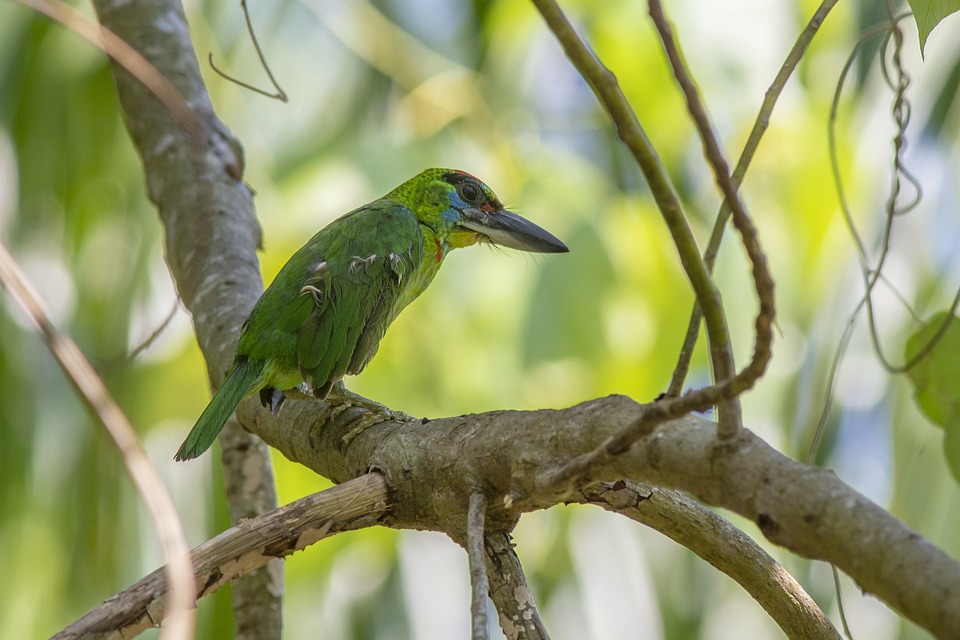Parrots are intelligent and social creatures that can greatly benefit from supervised outdoor activities. However, it is important to create a designated parrot-safe zone to ensure their safety and well-being. This article provides a step-by-step guide on how to create an ideal parrot-safe zone and answers some frequently asked questions regarding parrot behavior and safety in outdoor spaces.
A parrot-safe zone is an enclosed area or space that is specifically designed to minimize potential hazards and dangers for parrots during supervised outdoor activities. This controlled environment allows parrots to explore, exercise, and enjoy the fresh air while minimizing the risk of escape, injury, or exposure to toxic substances.
Here is a step-by-step guide on creating an ideal parrot-safe zone:
1. Choosing the Right Location: Select an area that is secure and free from potential hazards. Consider a spot with limited direct sunlight to prevent overheating. Ensure the location provides both shade and shelter from rain. Avoid areas near busy roads or loud noise sources to prevent stress.
2. Enclosing the Area: Install a sturdy and escape-proof fence around the designated space. Ensure the fence is tall enough to prevent flight or climbing escape attempts. Use materials such as galvanized mesh or aviary netting with small openings. Regularly inspect the fence for any gaps or weak spots.
3. Creating a Parrot-Friendly Environment: Provide natural perches, branches, and platforms for your parrot to rest and explore. Include a variety of toys and enrichment activities to keep them mentally stimulated. Plant non-toxic trees, shrubs, and plants to create a pleasant and visually appealing landscape. Remove any poisonous plants and ensure the area is free from toxic substances like pesticides or fertilizers.
4. Ensuring Safety Measures: Regularly check for potential hazards such as sharp objects, exposed wires, or toxic materials. Cover any electrical outlets or wires that may be accessible to your parrot. Remove any potential entrapment points or small gaps where a parrot could get stuck. Use non-toxic and bird-safe pest control methods to prevent infestations.
5. Supervision and Interaction: Always supervise your parrot during outdoor activities. Engage in interactive play sessions to strengthen the bond and provide mental stimulation. Be mindful of weather conditions and bring your parrot indoors during extreme temperatures or inclement weather. Regularly check on your parrot’s well-being, ensuring they have access to fresh water and shade.
Now, let’s address some frequently asked questions regarding parrot-safe zones:
Q1: Can I let my parrot out in my backyard without a designated parrot-safe zone?
It is generally not recommended to allow your parrot outside without a designated parrot-safe zone. Backyards often contain potential hazards such as toxic plants, predators, escape routes, and other dangers that can put your parrot’s safety at risk.
Q2: How can I prevent my parrot from escaping the parrot-safe zone?
To prevent escape, ensure the fence around the parrot-safe zone is tall, secure, and made of materials that cannot be easily climbed or flown through. Regularly inspect the fence for any gaps or weak spots that your parrot could exploit.
Q3: What are some signs that my parrot is enjoying the parrot-safe zone?
A happy and content parrot in a parrot-safe zone will display signs such as exploring the environment, engaging in play or foraging activities, vocalizing happily, and showing relaxed body language.
Q4: Can I leave my parrot unsupervised in the parrot-safe zone?
It is crucial never to leave your parrot unsupervised in the parrot-safe zone. Even within a controlled environment, accidents can happen, and your parrot may still be exposed to potential dangers. Always provide constant supervision during outdoor activities.
Q5: Are there any specific precautions I should take during extreme weather conditions?
During extreme weather conditions such as high temperatures or storms, it is best to bring your parrot indoors. Parrots are sensitive to temperature changes and can easily overheat or become stressed. Monitor weather forecasts and plan accordingly to ensure your parrot’s safety.
Creating a parrot-safe zone for supervised outdoor activities not only allows your feathered friend to enjoy the outdoors but also provides them with essential mental and physical stimulation. By following the steps outlined above and remaining vigilant during outdoor sessions, you can ensure a safe and enjoyable experience for both you and your parrot.









